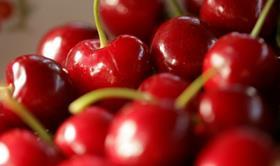
Researchers have identified a new way of controlling a fungal disease that can have a devastating impact on the UK’s valuable cherry and plum crops.
Brown rot disease – caused by the agent Monilinia Laxa – attacks stone fruit as well as causing blossom wilt and twig canker. Traditionally, this has been controlled through the use of fungicide treatments, but in some cases these are now becoming ineffective.
Researchers from theUniversity of Kent and East Malling Research have identified a new strategy for controlling the disease, using biological control agents derived from isolates from UK cherries and plums.
The researchers identified 12 possible isolates and then narrowed this down to two via a series of tests on detached fruit.
Controlled sets of cherries and plums – with and without the biological control agents added - were placed in conditions known to induce the onset of brown rot disease.
Professor Peter Jeffries, of the University’s School of Biosciences, said: 'Brown rot disease is a major problem for the UK’s cherry and plum producers and in a growing number of cases traditional fungicide treatments are becoming ineffective.
'Our research found that microbial antagonists against the brown rot disease can be found from indigenous sources in the UK and that they are capable of preventing the disease in controlled conditions.
'The challenge now will be to see whether these biocontrol agents can be adapted commercially and be used by the stone fruit industry to control brown rot disease.'
Currently, East Malling Research is exploring ways with commercial companies to formulate the two strains of biocontrol agents and conduct pilot commercial trialling of formulated products.
The study was carried out by Professor Jeffries and research student Nattawut Rungjindamai of the School of Biosciences, along with Professor Xiang-Ming Xu of East Malling Research.
The Department for Environment, Food and Rural Affairs (Defra), together with several commercial organisations, funded the research.



